Completion of the Freedom Bridge — South Sudan's Long-awaited Symbol of Peace and Freedom
2022.06.03
Construction of the country’s first arched steel bridge over the river, which flows through South Sudan, has been completed.
The Project for Construction of Nile River Bridge in Juba, South Sudan, was initiated in 2012. The bridge opening ceremony was held on May 19, 2022 and JICA President TANAKA Akihiko from Japan attended on site. It was his first overseas trip since assuming office. At the ceremony, South Sudan’s President Salva Kiir stated, “This bridge will stand as the lasting evidence of our true friendship with the Japanese people and their government. I would like to thank the government and the people of Japan for this important gift to the people of South Sudan.”
Being completed after overcoming suspensions for three times due to repeated outbreaks of conflict and the COVID-19 pandemic, the bridge is called by the people as the “Freedom Bridge,” with their hopes for peace, freedom, and a bright future for their country.
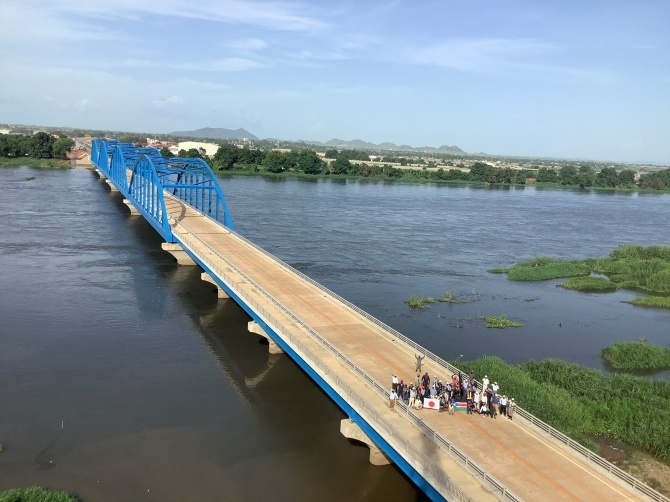
The completed Freedom Bridge, with the flags of Japan and South Sudan being displayed.
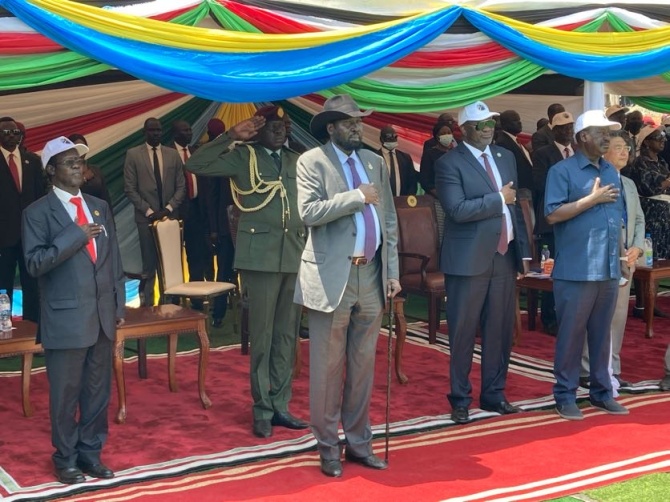
South Sudan President Salva Kiir (center) at the opening ceremony.
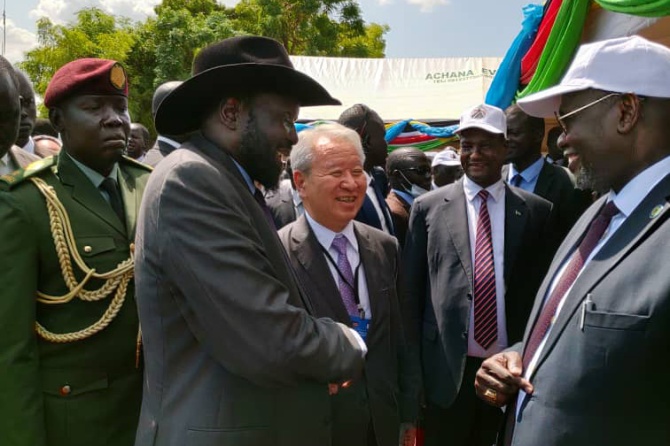
JICA President TANAKA Akihiko celebrating the opening of the bridge with South Sudan President Salva Kiir and First Vice President Riek Machar.
The Project for Construction of the Nile River Bridge was funded by the grant aid of the government of Japan. JICA has been responsible for the supervision of the project implementation.
Engineering consultant UMEDA Norio of CTI Engineering International Co., Ltd., oversaw the project as Resident Engineer since its beginning. Mr. Umeda spoke, “I am relieved that the project is finally complete and sincerely happy that we were able to contribute to the people of South Sudan. I appreciate the many South Sudanese workers who have worked hard patiently with us on this project.”
SAGARA Fuyuki, Chief Representative of the JICA South Sudan Office, also emphasized “Both the fact that many stakeholders from both Japan and South Sudan, including consultants, contractors, local staff, and government officials, overcame many difficulties through their teamwork to complete such a big project, and the fact that this bridge will now contribute to improve the people's lives and the economy, are of great significance.”
South Sudan has gained its independence from Sudan in 2011 as the world’s newest country, but the path it came through has been a series of turmoil and hardships. The country was the site of Africa’s longest civil war, spanning half a century, in which over 2 million people lost their lives. As a multi-ethnic nation of more than 60 ethnic groups, social cohesion among the peoples has been still challenging, even after the country gained independence. While South Sudan faces various challenges, steps are being taken to build a new nation. One project, meant to commemorate the nation’s independence with hope towards its future, was the construction of the Freedom Bridge.
Mr. Sagara spoke, “As South Sudan is a landlocked country and has extensive marshland in the center, transportation is quite challenging by its nature. In addition, there was a long period of civil war prior to the independence, which prevented the development of transportation infrastructure. Juba Bridge, the only existing bridge over the Nile River, located in the capital of Juba, is a prefabricated bridge built 50 years ago.”
Yet, the Juba Bridge was the only way to transport goods from the neighboring countries of Uganda and Kenya to Juba, via international highway. The international highway connects Juba to Kampala, the capital of Uganda; Nairobi, the capital of Kenya; and the Port of Mombasa in Kenya. It has been a lifeline in transporting goods for the country’s reconstruction. With traffic congestion worsening, however, it became important to implement urban planning that would take future population growth into account. Therefore, JICA cooperated to create a plan to improve road networks and build a new bridge. The bridge construction project began in response to South Sudan’s hope that it would facilitate efficient international transportation and contribute to the economic recovery and growth of South Sudan. The name Freedom Bridge was coined to reflect the South Sudanese people’s wish for freedom and peace, after achieving their long-awaited independence.
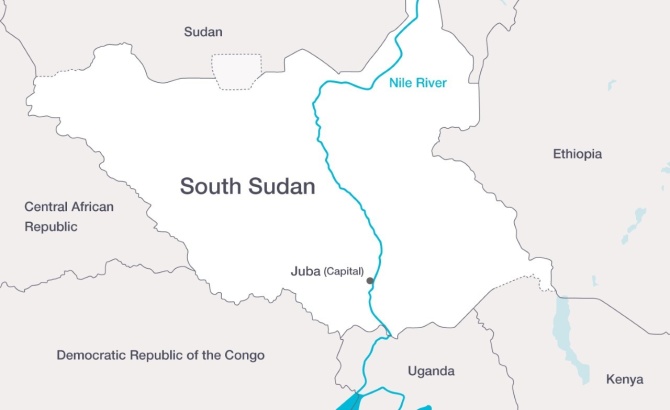
This map of South Sudan shows the location of the capital of Juba, where the bridge crosses the Nile River, and neighboring countries
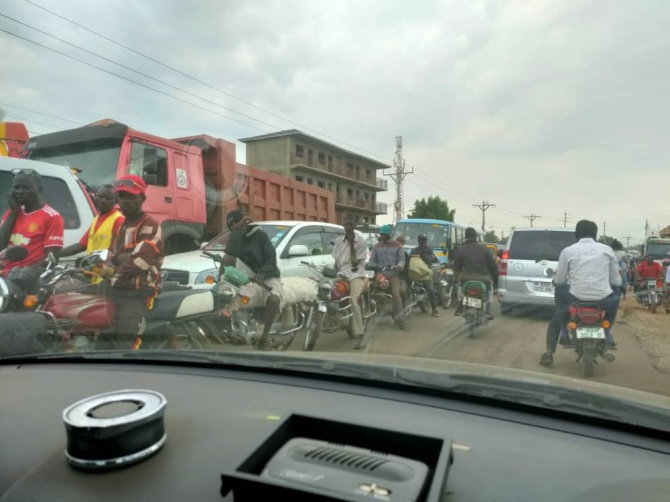
Traffic jams are commonplace in the capital city of Juba.
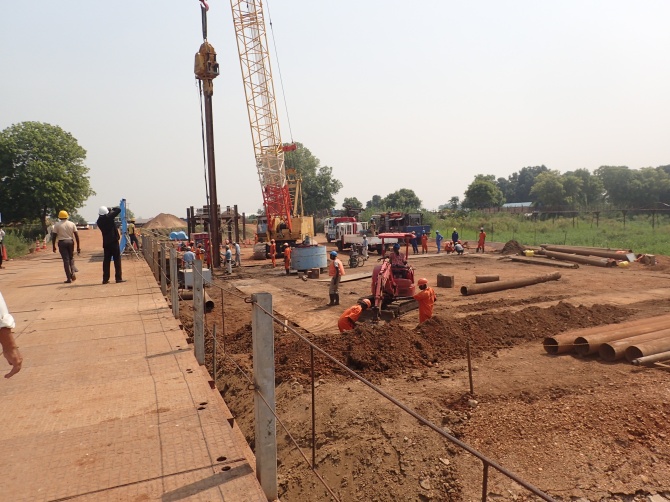
Construction began in 2013. A large number of massive machines and materials were brought to the site.
The 560-meter-long bridge is the first arched steel bridge in the country to span the Nile River. “As a civil engineer, I was energized by the sense of mission,” Mr. Umeda passionately spoke. Construction began in 2013. Though the bridge was originally scheduled to open in 2017, work had to be suspended three times due to various disruptions. Two were due to the escalation of armed conflicts from political power contention. The first disruption forced Japanese staff to leave the country for over a year, and the second for over two-and-a-half years.
Both the Japanese and South Sudanese staff were united in their desire to resume work at the site as soon as possible. “During that time, we kept in contact with the local South Sudanese staff via email and phone on a daily basis, in order to preserve the site. We also worked hard to stay in touch with the Ministry of Roads and Bridges as the client,” spoke Mr. Umeda. A peace agreement in 2018 ended the second conflict, and construction resumed in 2019. The following year, however, Japanese staff were again forced to leave the country on account of the COVID-19 pandemic. After almost a year’s suspension, the project was able to resume, and construction was finally completed in May 2022.
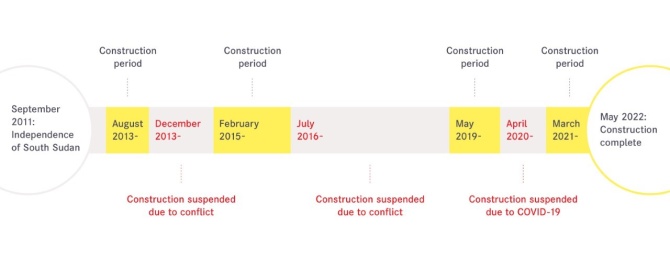
A time line of the construction period from the start of construction to project completion.
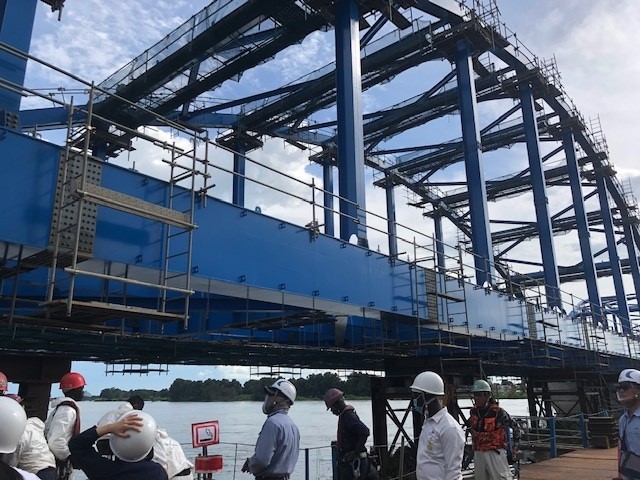
View of the girder assembly for the arch section. During peak construction, the local workforce numbered nearly 200.
Japanese consultant and contractor worked with nearly 200 South Sudanese laborers. They also worked on to transfer the technologies related to bridge construction. Mr. Umeda stated that he felt a positive response to the efforts not only in terms of technology, but also in educating the workers on rules of discipline and safety. “The disciplined labor and security management by the contractor, Dai Nippon Construction, was excellent,” he spoke. “Every morning, all staff participated in a morning briefing and a radio calisthenics session, and each team had a tool-box meeting. Construction progress and monthly goals were discussed, and they worked to improve work ethic and morale, while also maintaining discipline. The daily tidying-up practices of the Japanese scaffolding experts were also naturally passed onto the local workers, and the workers—even the drivers—became more proactive about cleaning. The site was always kept tidy.”-
Mr. Umeda stated that the people of South Sudan were pleasant to work with because of their straightforward attitude toward learning and a diligent work ethic. “Most civil engineering work involves structures that are built underground and are not visible after the completion,” he spoke. “The work conducted in the river was the most significant example of this. I remember feeling a deep sense of relief when we were able to cast the concrete for the first bridge pier in the bedrock, seven meters below the surface of the water. I am sure that the South Sudanese workers must have experienced the same sense of accomplishment, as they all worked hard without complaining about the tough operation. I can say the real worth-doing of civil engineering work overseas is seeing people of different nationalities working together to achieve one goal. I hope that they will put the experience and skills gained here to good use in future efforts to the nation building.”
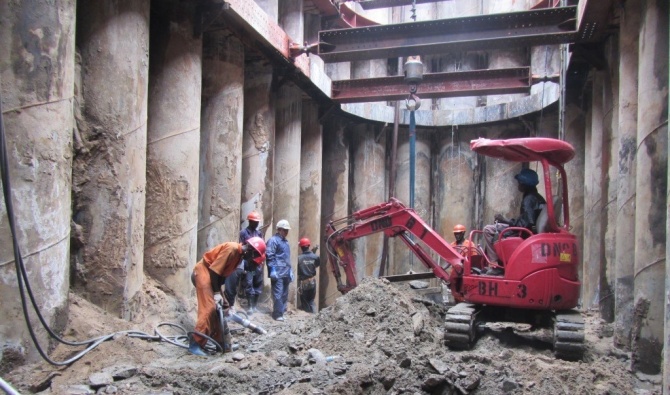
Steel pipe sheet pile surrounds the excavations to embed the pier foundations into the hard rock seven meters below the water's surface.
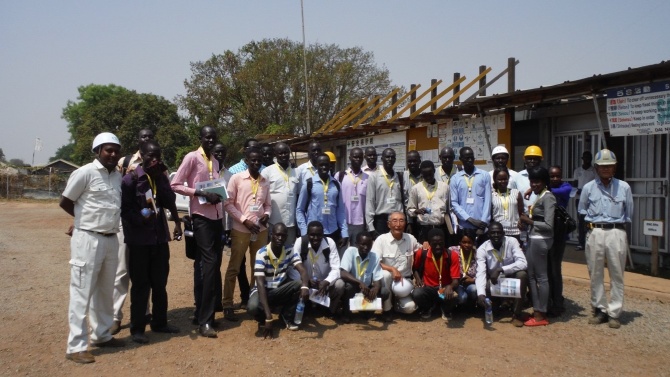
Mr. Umeda (center) also dedicated himself to the education of local young people. Students from the Department of Civil Engineering at the University of Juba were invited to the construction site as part of their field training. Mr. KUSAKA Kiyoshi (right), Project Manager of Dai Nippon Construction, also contributed to accomplish the project.
South Sudan President Salva Kiir spoke passionately at the opening ceremony for the Freedom Bridge. “I would like to call upon you to work hard to maintain peace in our country,” he spoke. “War holds up progress, and the time it took to complete this bridge is a living example of how war delays development. Having peace will allow us to focus on service delivery and development projects. I urge you all to show your appreciation to our Japanese friends who gifted us with this structure by taking care of it. Let’s all drive safely on it, because it is our new lifeline and a gateway to the region.”
Mr. Sagara also pointed out that the Freedom Bridge will be a symbol of peace in the true sense that it has been completed after having overcome so many difficulties of conflicts and the pandemic, and having restored the stability in Juba . “In South Sudan, there are diverse ethnic groups with diverse values, cultures, and lifestyles,” he spoke. “However, there is also a need for values that they can all share as a people of one nation. It is my hope that this bridge will be loved and utilized by the people of South Sudan for many years to come, and serve as a base for their common pursuit of further peace and freedom.”
scroll